The Vivo T3 Ultra and Vivo V40 are two of the latest contenders in Vivo’s mid-range smartphone lineup, offering competitive features and innovative technology. While the Vivo V40 builds on the success of its predecessor with a refined design, Zeiss-tuned cameras, and stellar performance, the Vivo T3 Ultra surprises with flagship-level capabilities at a similar price point. With both devices boasting powerful processors, immersive displays, and impressive camera systems, choosing the best fit can be challenging.
In this comprehensive comparison, we will analyze key aspects such as design, display, performance, camera quality, battery life, and pricing to help you decide which Vivo smartphone reigns supreme. Whether you prioritize photography, gaming, or everyday usability, this guide will assist in making an informed decision tailored to your lifestyle.
Vivo T3 Ultra vs Vivo V40: Specification
| Feature | Vivo T3 Ultra | Vivo V40 |
| Design | Monotone design, curved edges, IP68-rated | Monotone design, curved edges, IP68-rated |
| Dimensions | 164.2 mm x 74.9 mm x 7.6 mm | 164.2 mm x 75 mm x 7.6 mm |
| Weight | 192 grams | 190 grams |
| Display | 6.78” AMOLED, 120Hz refresh rate, 4,500 nits HDR peak brightness | 6.78” AMOLED, 120Hz refresh rate, 4,500 nits HDR peak brightness |
| Resolution | FHD+ (1,260 x 2,800), 453 PPI | FHD+ (1,260 x 2,800), 452 PPI |
| Chipset | MediaTek Dimensity 9200+ (4nm) | Qualcomm Snapdragon 7 Gen 3 (4nm) |
| RAM | 8 GB / 12 GB LPDDR5x | 8 GB / 12 GB LPDDR4x |
| Storage | 128 GB / 256 GB | 256 GB / 512 GB UFS 2.2 |
| Operating System | Android 14, Funtouch OS 14 | Android 14, Funtouch OS 14 |
| Rear Cameras | 50 MP Sony IMX921 OIS Main + 8 MP Ultra-Wide | 50 MP Zeiss OIS Primary + 50 MP Zeiss Ultra-Wide with AF |
| Front Camera | 50 MP Group Selfie with AF | 50 MP Front Camera with AF |
| Battery | 5,500 mAh, 80W wired charging | 5,500 mAh, 80W wired charging |
| Connectivity | Dual SIM, Dual-band WiFi, Bluetooth 5.4, NFC, USB-C 2.0 | Dual SIM, Dual-band WiFi, Bluetooth 5.4, NFC, USB-C 2.0 |
| Color Options | Lunar Gray, Frost Green | Lotus Purple, Ganges Blue, Stellar Silver, Sunglow Peach |
| Price (India) | ₹31,999 – ₹35,999 | ₹34,500 – ₹42,999 |
Vivo V40 vs T3 Ultra: Design and Appearance
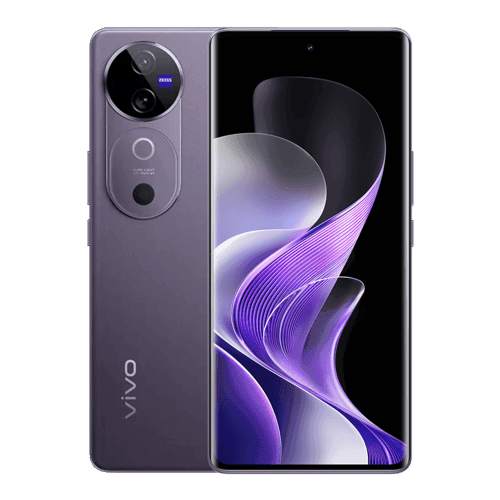
The Vivo V40 builds on the minimalistic design philosophy of its predecessor, the V30 series, offering an elegant yet functional upgrade. At 7.58mm thick, the device boasts a slim profile that fits comfortably in the hand. Its IP68 rating ensures durability by making it resistant to both dust and water, a valuable feature for everyday usage.
A standout design element of the Vivo V40 is the Gemini Ring Design on its camera module, enhanced by the Zeiss logo, which adds a premium touch. Among the available color options, the Nebula Purple variant is particularly eye-catching, exuding a sophisticated charm. To complement the design, dual speakers are seamlessly integrated, enhancing the multimedia experience.
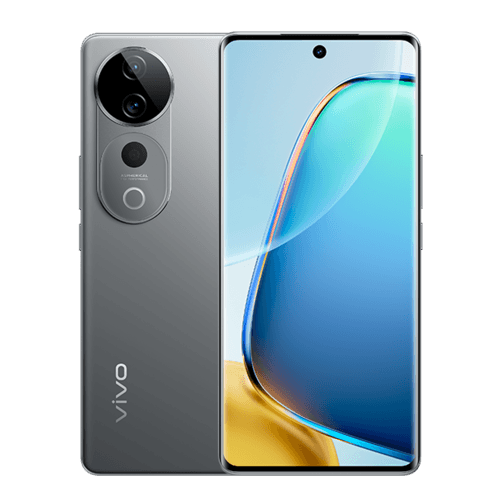
The Vivo T3 Ultra adopts a similar design ethos, with curved edges and a glass sandwich construction, giving it a polished and premium look. Its Lunar Gray and Frost Green color options cater to diverse preferences, with the Frost Green finish standing out for its enhanced tactile feel and visual appeal.
Despite sharing the same 7.58mm thickness and IP68 rating as the V40, the T3 Ultra omits the Zeiss branding, which may matter to camera enthusiasts. Additionally, it lacks NFC support, a feature some users may find essential for mobile payments and quick data transfers.
Vivo V40 vs T3 Ultra: Display Comparison
The Vivo V40 features a 6.78-inch curved AMOLED display, offering an elegant design with near-borderless aesthetics that create an immersive viewing experience. The panel supports HDR10+, ensuring vivid colors and an enhanced dynamic range in HDR videos, which are ideal for streaming and gaming. With a remarkable peak HDR brightness of 4,500 nits, watching HDR video is truly a treat. The Vivo V40 excels in outdoor visibility, even in direct sunlight, with a display brightness of 1300 nits in auto brightness mode.
The 120Hz refresh rate provides buttery-smooth scrolling and fluid animations, which are particularly noticeable in fast-paced games. Additionally, the display is SGS-certified for eye protection, reducing blue light emission for prolonged viewing comfort. Enhancing the multimedia experience further, the Vivo V40 includes dual stereo speakers, which deliver clear, loud, and rich audio.
The Vivo T3 Ultra also offers a 6.78-inch curved AMOLED display emphasizing vibrant color reproduction and minimal accidental touches, making it as functional as it is stylish. The panel supports HDR10+ videos just like the Vivo V40; however, the panel in the Vivo T3 Ultra is slightly dimmer at 1200 nits. Additionally, this panel supports 1 billion colors, which the Vivo V40 lacks. The screen also includes customizable display modes—Standard, Professional, and Bright—allowing users to tailor the viewing experience to their preferences.
One standout feature is the Visual Enhancement mode, which optimizes the display for improved clarity and color vibrancy during video playback and gaming. The Vivo T3 Ultra supports stereo speakers as well, although there’s minor distortion at maximum volume levels, which may be noticeable to audiophiles.
Verdict:
When comparing displays, both the Vivo V40 and Vivo T3 Ultra have their strengths. The Vivo T3 Ultra features better display quality with support for 1 billion colors, while the Vivo V40 offers a brighter screen. However, when it comes to audio quality, the Vivo V40 stands out as the better option.
Vivo T3 Ultra vs Vivo V40: Camera Performance
The Vivo V40 takes mobile photography to the next level with its dual rear camera system, featuring a 50MP Zeiss OIS main sensor and a 50MP ultrawide sensor. This setup ensures stunning image clarity and versatility, whether capturing expansive landscapes or intricate close-ups. The Zeiss Multifocal Portrait feature allows users to adjust focal lengths and apertures, providing a DSLR-like experience for portrait shots.
Low-light photography is the strength of the Vivo V40, thanks to the combination of Optical Image Stabilization (OIS) and Aura Light, which reduces noise and enhances detail in dim environments. The 50MP front camera supports a 92-degree field of view, perfect for group selfies or scenic backdrops. On the video front, the Vivo V40 offers 4K recording with stabilization and a cinematic mode for professional-quality footage.
The Vivo T3 Ultra focuses on delivering reliable, natural-looking photos with its 50MP Sony IMX921 primary sensor paired with an 8MP ultrawide lens. While it lacks a telephoto lens, the device compensates with Camera-Bionic Spectrum technology, which enhances colors and details, producing lifelike images across various lighting conditions.
For low-light photography, the Smart Aura Light boosts performance, though it doesn’t quite match the precision of the V40’s Aura Light system. The 50MP front camera features AI Facial Contouring, enabling flattering, wide-angle selfies with natural skin tones. Video recording is solid, though it doesn’t offer the same cinematic capabilities as the V40.
Verdict:
The Vivo V40 excels in camera quality, boasting superior rear and front camera sensors that produce excellent dynamic range, accurate colors, and detailed images. However, it does experience a slight shutter lag due to its weaker processor, which is not an issue with the Vivo T3 Ultra. On the other hand, the Vivo T3 Ultra features only a decent ultra-wide camera, and its selfie camera is somewhat inferior compared to that of the Vivo V40. Overall, the Vivo V40 clearly comes out on top in this comparison.
Vivo V40 vs T3 Ultra: Performance and Software
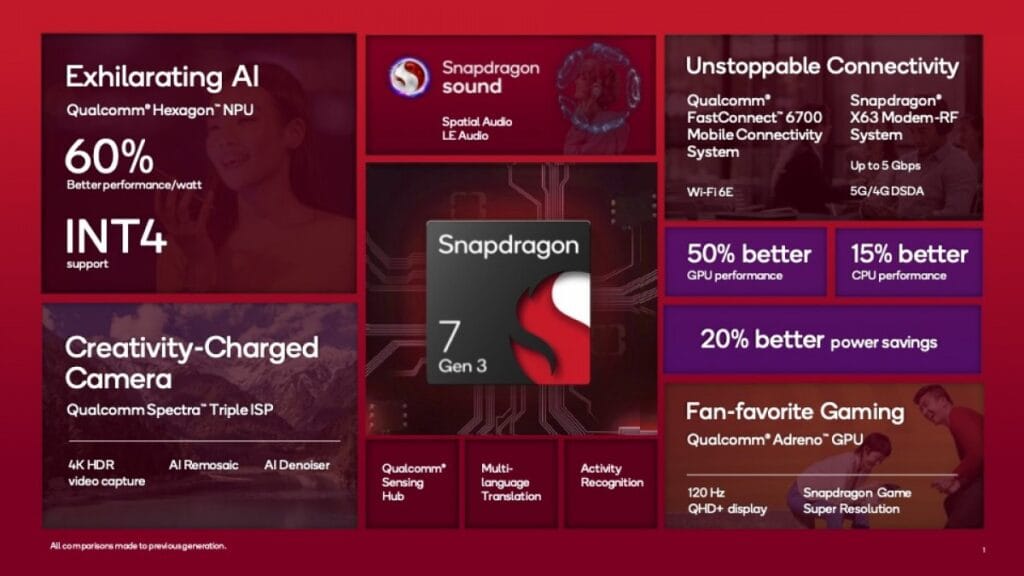
Vivo powers the V40 with the Snapdragon 7 Gen 3 processor and offers up to 12GB of RAM. This configuration ensures effortless multitasking and handles resource-intensive applications with ease. However, the Snapdragon 7 Gen 3 SoC is still a mid-range chipset. During testing, there were no significant frame drops, but for heavy games, you will have to reduce the graphics quality to play games at 60 FPS. We also find no overheating during prolonged gaming.
Running on Funtouch OS 14 based on Android 14, the software experience is polished and feature-rich. The user interface is smooth, with useful enhancements like improved widgets and advanced privacy settings. While Funtouch OS has historically been criticized for bloatware, the latest version shows significant improvement in optimization and user-friendliness.
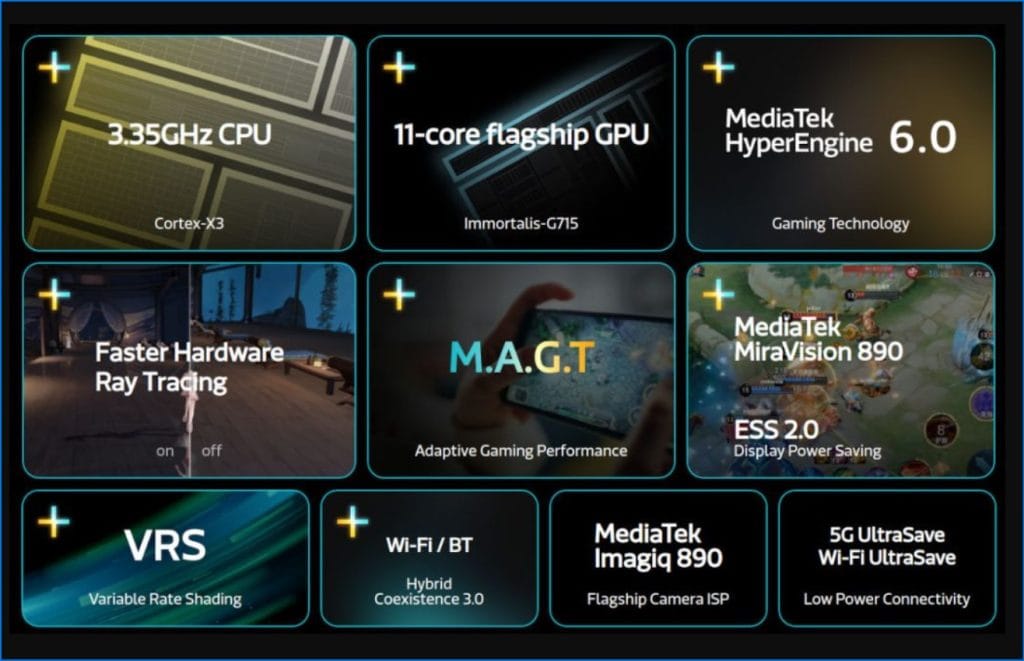
The Vivo T3 Ultra is powered by the MediaTek Dimensity 9200+ chipset and is available with up to 12GB of LPDDR5x RAM, providing a solid foundation for performance. The Dimensity 9200+ SoC outperforms the Snapdragon 7 Gen 3, making the Vivo T3 Ultra a better choice for those prioritizing gaming and overall performance. This configuration ensures smooth operation for daily tasks and demanding games, offering impressive frame stability and responsiveness. However, during extended gaming sessions, the device may become slightly warm, but this warmth is not severe enough to affect usability.
The phone also runs Funtouch OS, delivering extensive customization options and features. However, the interface feels slightly cluttered compared to the V40, with redundant apps and a learning curve for new users.
Verdict:
If performance is your top priority, the Vivo T3 Ultra is the better choice. However, the Funtouch OS on the Vivo T3 Ultra is cluttered and includes bloatware. On the other hand, while the Vivo V40 may not deliver the same level of performance as the Vivo T3 Ultra, its Funtouch OS is relatively cleaner.
Vivo V40 vs T3 Ultra: Battery and Charging
The Vivo V40 is powered by a 5,500mAh battery, which demonstrates exceptional longevity. In real-world usage, it offers up to two days of battery life, depending on user habits. In benchmark tests like PCMark, the device achieves an impressive 19 hours and 58 minutes, reflecting its efficiency for extended use.
When it comes to charging, Vivo’s 80W FlashCharge technology ensures minimal downtime. The device can reach significant charge levels in just a short period, making it ideal for users who are always on the go. This fast-charging capability adds significant convenience, especially in situations requiring a quick top-up.
The Vivo T3 Ultra also houses a robust 5,500mAh battery that outperforms slightly in endurance. In tests, it clocked an HD loop playback time of 21 hours and 30 minutes, a testament to its efficient power management. For daily usage, it offers a solid 1.5 days of life on moderate usage, though heavy usage might reduce this figure.
An 80W fast charger handles charging, achieving 33% in just 15 minutes and a full charge in 55 minutes. The charging speed and battery endurance make it a reliable companion for busy schedules.
Vivo T3 Ultra vs Vivo V40: Pricing and Variants
The Vivo V40 is positioned as a premium offering, reflecting its advanced features, including the Zeiss camera technology and Snapdragon 7 Gen 3 processor. It comes in two primary variants:
- 8GB RAM + 128GB storage: Priced at ₹34,999
- 12GB RAM + 512GB storage: Priced at ₹42,999
This pricing structure makes the Vivo V40 more expensive, especially for users who prefer the higher RAM and storage configuration for more demanding tasks and multimedia consumption.
The Vivo T3 Ultra, on the other hand, offers a more budget-friendly pricing tier while still delivering impressive performance with the MediaTek Dimensity 9200+ chipset. It comes in three variants:
- 8GB RAM + 128GB storage: Priced at ₹31,999
- 8GB RAM + 256GB storage: Priced at ₹33,999
- 12GB RAM + 256GB storage: Priced at ₹35,999
These prices make the Vivo T3 Ultra an attractive option for those looking for a well-rounded smartphone at a lower price point compared to the Vivo V40.
Conclusion:
The Vivo V40 is an excellent choice for photography enthusiasts and those who appreciate a premium design. With its advanced 50MP Zeiss camera system, which excels in low-light conditions, and its cinematic video recording capabilities, it’s a top contender for users who want to capture stunning photos and videos. The stereo audio experience and sleek design further enhance its appeal. If you’re someone who values premium build quality, exceptional camera performance, and top-tier audio, the Vivo V40 stands out as an ideal option.
On the other hand, the Vivo T3 Ultra is better suited for performance and gaming enthusiasts who want a device that handles demanding tasks with ease. Its MediaTek Dimensity 9200+ chipset ensures smooth gameplay and fast processing speeds. Additionally, it offers a more affordable price point, providing competitive hardware without breaking the bank. For users who prioritize performance and value for money, the Vivo T3 Ultra delivers impressive results.
Ultimately, the choice between the Vivo V40 and Vivo T3 Ultra depends on your specific needs and priorities. If you’re looking for a premium design, superior camera capabilities, and better speakers, the Vivo V40 is the way to go. However, if you’re more focused on performance, gaming, and a budget-friendly option with solid features, the Vivo T3 Ultra is an excellent choice.
Read More:
Vivo V40 Pro vs HONOR 200 Pro 5G: Which is The Better?
Vivo V40 Pro vs Xiaomi 14 Civi: Which Camera-Centric Phone You Should Buy?

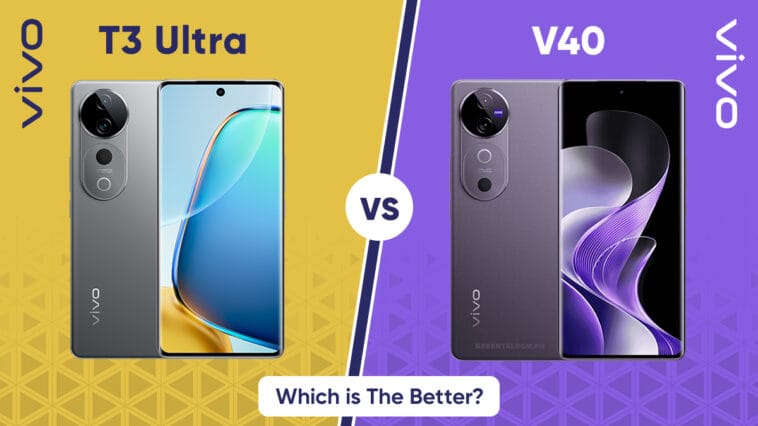


Comments
Loading…